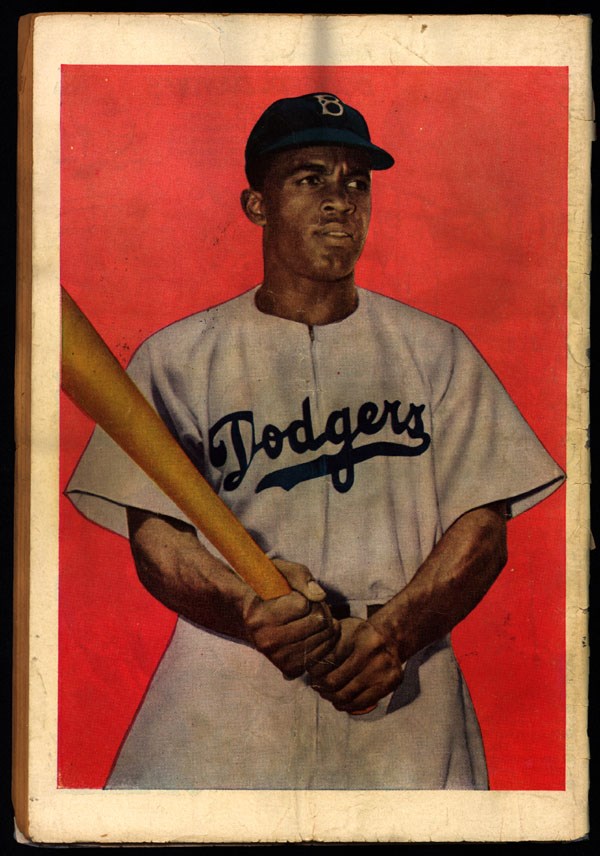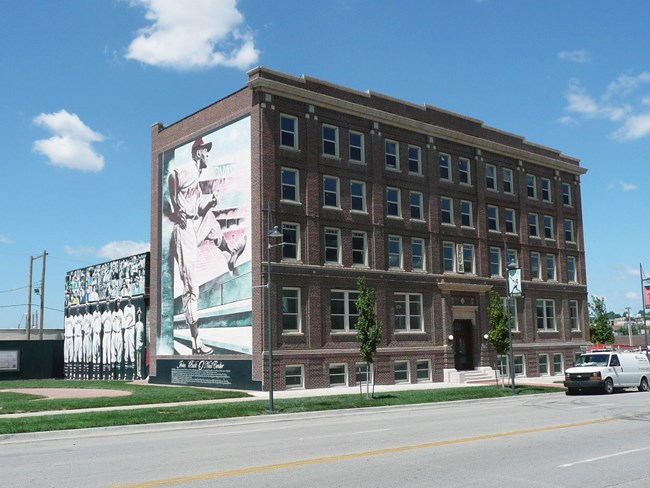Part of a series of articles titled Curiosity Kit: African American Baseball .
Previous: Places of Black Baseball
Article

This Curiosity Kit Educational Resource was created by Katie McCarthy, a NCPE intern with the Cultural Resources Office of Interpretation and Education.
Between 1900 and 1947, when Jackie Robinson broke the color barrier in modern baseball, the sport was racially segregated. Black baseball players played in segregated clubs, teams, or leagues, which were often short-lived. Today, seven of these leagues are recognized as professional, high quality organizations. These leagues are: the Negro National League (I) (1920-1931), the Eastern Colored League (1923 – 1928), the American Negro League (1929), the East-West League (1932), the Negro Southern League (1932), the Negro National League (II) (1933-1948) and the Negro American League (1937 – c.1948). Collectively, these leagues are referred to as the Negro Leagues. In December 2020, the Major League Baseball (MLB) organization recognized teams in these leagues as Major League teams. This decision adds Negro League teams and players to official baseball records and makes them eligible for the National Baseball Hall of Fame. You can learn more about these players and teams by exploring the Places of Black Baseball.

Research the history of Black baseball leagues, teams, and players in the first half of the 1900s.
Celebrate the achievements of Black baseball players who played professionally during this period.
Identify sites that commemorate perseverance in your own community
The achievements of Black baseball players during the early 1900s are starting to be more widely recognized. What can we do to celebrate those whose achievements have been under-represented?
As listed in the above background paragraph, during the “golden age” of Black baseball, players belonged to one of seven leagues. Choose one of these seven leagues to learn more about. As you research, consider the following questions:
When and where was this league founded?
Who founded and funded the league?
Why did this league end?
What were the teams that made up the league?
Where were these teams based?
If this league participated in the Colored World Series or the Negro World Series, which teams were the World Series winners?
Are there any famous players who played in this league?
What kind of legacy did this league leave?
Why do you think it’s important that we learn about this league and its players?

The earliest baseball cards were produced during the mid-1800s, when both baseball and photography were gaining in popularity. Cards were sold with candy, like bubblegum, or on their own. By the early 1930s, production soared. Baseball cards normally displayed a picture of a player alongside their name, team affiliation, statistics, and some biographical information. Although baseball cards featuring Negro League baseball players have been created since the 1970s, few Negro League players featured on baseball cards while they were actually playing.
You can find out more about Negro League baseball players online on the Major League Baseball website, the Negro League Players Hall of Fame, and elsewhere. Choose one or more players and design a baseball card that features them. As you do, make sure to include:
The player’s name.
The player's birthday.
What league the player was a part of.
What team(s) the player was on.
The player’s statistics.
Important facts about the player’s life or career.
Throughout their lives and careers, Black baseball players who participated in the Negro Leagues faced discrimination and racism. The baseball stadiums highlighted in the Places of Black Baseball both celebrate their achievements and acknowledge their perseverance. Each community has sites associated with overcoming struggle. What are some sites of perseverance in your community? These sites might be tied to a national struggle such as the American Revolution or the desegregation of schools. They might also be tied to smaller, more local struggles such as preserving a historic building or supporting a local business that is struggling. Places of perseverance might even be tied to your own life, such as places where you got over a particular fear or did something challenging.
Pick three to five sites of perseverance to create a “Places of Perseverance” map. As you do so, consider the following questions:
What event is tied to this place? Who were the people involved?
Has the place remained the same since the event, or has it changed?
Who uses this place today?
What does this place look like? What does it feel like? What does it smell like? What does it smell like?
How do you feel when you are at this place?
If your curious to learn more about Black Baseball players, explore the Teaching with Historic Places lesson plan, A Field of Dreams: The Jackie Robinson Ballpark
Part of a series of articles titled Curiosity Kit: African American Baseball .
Previous: Places of Black Baseball
Last updated: March 24, 2021